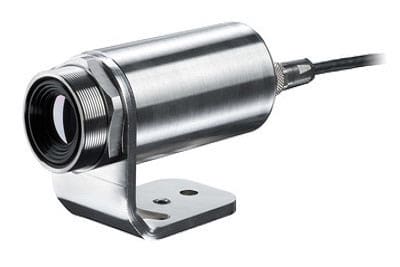
What to Consider When Choosing an Infrared Pyrometer for Plastics
Process Parameters, a UK-based manufacturer and distributor of industrial temperature sensors, infrared sensors and thermal cameras, shares eight important things you need to consider when choosing an infrared pyrometer for plastics.
1. The material you want to measure and its surface finish
Knowing which material you wish to measure is extremely important to be able to take a reliable temperature measurement. This will have a direct impact on the sensor chosen and the emissivity setting you use. Fortunately, most plastics are easily measured using non-contact infrared methods and have a high emissivity. This enables measurement using low-cost sensors in many cases.
It is important to recognise however that metallic parts are less easy to measure and if your product combines both or you wish to measure the temperature of mould tools, care is required. For metal parts, Process Parameters offers various sensors sensitive to short-wavelength infrared radiation. Using the shortest wavelength possible for your measured temperature will help to avoid most issues associated with low, unknown, or changing emissivity.
2. The size of the object that you are measuring
When using an infrared pyrometer, the size of the object being measured needs to be known so the correct sensor can be selected. The measuring spot for the sensor needs to be smaller than the part being measured and needs to be positioned completely on the part. Process Parameters offers plenty of choices when it comes to selecting a sensor with a variety of optical resolutions available including spot sizes down to less than 1mm in some cases.
For plastics applications where small parts are being measured, Process Parameters offer a variety of high-quality optics which give small measuring spots at a larger distance and use laser aiming to ensure correct positioning of the sensor.
3. Ambient temperature
Is the sensor you have chosen suitable for the operating environment it will be working in? If not, it is possible to cool or heat the sensor to ensure it meets the operating parameters. Often this is achieved by fitting air or water cooling.
Thermal shock is another phenomenon that can cause issues with infrared temperature measurement and needs to be avoided. This is a potential problem for smaller sensing heads and the addition of thermal mass; usually, a larger housing can overcome the issue.
4. Dust, dirt and humidity
Is there a high possibility of debris or moisture settling on the lens of your sensor? Infrared temperature sensors work on their ability to be able to “see” the object you wish to measure. If there is dirt, debris, or condensation on the lens of the sensor, the ability of the sensor to measure properly is diminished, resulting in inaccurate measurements. Usually fitting an air purge collar to the sensing head is sufficient to prevent this.
In some plastics applications, there is a potential for smoke, steam and dust to be present in the environment and again, this can prevent an accurate measurement from being taken.
5. How will you aim the sensor?
It is easy to aim the sensor for many applications as the parts are large enough that it is almost impossible to miss. However, when considering smaller parts and when measuring through gaps in machinery, it is extremely important to aim the sensor correctly.
Laser aiming is the simplest method and is commonly used. The Optris system of dual laser aiming shows you exactly where the sensor is aiming and also the size of the measuring spot.
6. Material thickness
For most plastic parts, the thickness of the material is not an issue and can be disregarded. However, in applications where thin-film plastics are being used, it is extremely important to consider.
Where materials are sufficiently thin, it is perfectly possible for an infrared sensor to be able to “see-through” the material and have its measurement influenced by the objects behind the material being measured, giving false readings. This phenomenon is only an issue where materials are thinner than 0.4mm. In these cases, it is important to choose a sensor that has been specifically designed for the purpose and is sensitive to a specially selected wavelength that does not pass through the plastic film.
Optris offer such designs for a variety of thin-film materials and processes.
7. Sensor output signal
A sensor is no use if you cannot integrate it with your process measurement and control equipment. Of course, there are the industry standard mA and V signals, which are utilised extensively across the Optris range. However, if you have been using a different type of sensor or intend to use a communication system, what can you do?
In some cases, Optris sensors can provide a thermocouple output so if you replace an existing thermocouple sensor, simply wire up your new IR sensor and no other configuration is required.
Many Optris sensors have the capability to fit an interface card which upgrades the capabilities of the sensor. This can be USB or Ethernet for communication with a PC or ProfiBus or CANBus for industrial communication.
8. Speed of response
By their very nature, infrared temperature sensors are massively quicker than contact probes such as thermocouples or RTDs. However, in some applications, speed of response is extremely important. Typically, an Optris sensor will have a response time of less than 100 milliseconds, but Process Parameters offer products with response times as fast as 1 millisecond, and with its new CT 4ML sensor, suitable for both plastics and metals, the response time is now as low as 90µs.
For more information, visit www.processparameters.co.uk or get in touch with the team at Process Parameters using the contact details below.
Process Parameters
01628 778688
Website
Email





